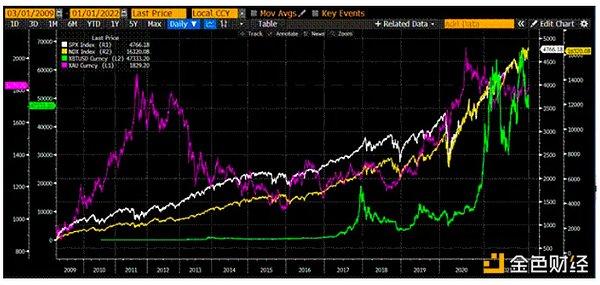Author:wassielawyer (Wassie Lawyer)
Compiled by: TechFlow
The Foundations of Web3 Projects: What They Are, What They Are Not, and Why to Use Them
In the crypto world, the "foundation" is one of the least understood and most expensive products purchased by founders. It often feels like most lawyers don't fully understand it themselves.
First, why do foundations exist in Web3? What problem are we solving by setting up foundations?
The main reason for setting up a foundation is to solve the problem of Token issuance. But to understand why this is a problem, we first need to briefly introduce the structure of most Web3 projects.
Currently, most Web3 projects typically set up a so-called "LabsCo" or "DevCo" (development company) in jurisdictions like Delaware or Singapore.
These jurisdictions are very suitable for operating companies that develop technology. They have SAFE (Simple Agreement for Future Equity) in the Y-combinator model, provide convenient banking services, have efficient corporate services, and have a well-developed legal infrastructure.
The founders of Web3 projects usually become shareholders of this development company, raising funds through SAFE-weighted securities (we can discuss SAFTs separately).
However, there is one thing that is absolutely forbidden, and that is issuing Tokens from Delaware or Singapore. Issuing Tokens from the US is completely infeasible, and Singapore's virtual asset laws are not very friendly to Token issuance either.
Generally, you shouldn't make mistakes on your own turf.
This is a problem for Web3 projects, because their business model is essentially
(a) raising funds to develop technology (or host events),
(b) consuming those funds over a few years, and ultimately
(c) launching a Token, so that investors can profit and the team can make money.
Your development company is unlikely to generate significant revenue, let alone profit, before the Token launch.
So you do need to launch a Token. But how do you do that without breaking the law or messing up the taxes? This is where the "foundation" structure comes in. It is intended to serve as an offshore Token issuance and governance structure that can allegedly shift the liability away from the founders.
The two most common forms are
(a) a Panama foundation plus a company, and
(b) a Cayman Islands and British Virgin Islands (BVI) structure. The logic behind this is:
Issuing Tokens from the development company (LabsCo) is not appropriate, because the founders are all inside the LabsCo. We need a structure that is separate from the LabsCo to issue the Tokens.
The best approach is to issue the Tokens in a (a) jurisdiction that allows Token issuance, (b) that is unrelated to the LabsCo, and (c) that is unrelated to the founders.
The reason for choosing Panama and BVI as the Token issuance locations is that Panama has no virtual asset laws, while BVI's virtual asset laws are very favorable for Token issuance.
This solves the problem mentioned in (a).
Now solving the problem in (b) is actually not that difficult, although you sometimes see lawyers making mistakes in this area. The key is to not issue the Tokens from the development company (LabsCo), and to not have the Token issuer controlled by the LabsCo.
(c) is often where many lawyers tend to make mistakes.
If the LabsCo doesn't own the Token issuer, then who does? This is where the "foundation" concept comes into play. The foundation is seen as a ownerless entity, making it an ideal choice to own the issuer.
Sounds good, just set up a ownerless foundation and we're done, right? If only it were that simple.
This is where the concept of UBOs (Ultimate Beneficial Owners) comes into play. UBOs refer to the natural persons who ultimately own the assets of a legal structure, or in the absence of clear ownership, the natural persons who can exercise ultimate control over the structure.
The importance of UBOs is that they may (a) affect the tax treatment of the legal structure, or be taxed on the structure's activities, (b) bear personal liability for certain actions of the structure, (c) give a country jurisdiction over the structure, and (d) need to be disclosed to certain national registries and/or business partners (such as exchanges, banks, financial institutions, etc.) as part of KYC/AML (Know Your Customer/Anti-Money Laundering) activities.
In a typical corporate structure, the UBOs are usually the shareholders.
If the company is profitable, they can benefit not only from the appreciation of their equity, but also indirectly control the company through shareholder rights, such as hiring and firing directors.
This is relatively straightforward.
But for a so-called "ownerless" foundation, how does this work?
Let's explore two common foundation structures.
The Panamanian Private Interest Foundation (PIF) is a structure commonly used for estate planning, but has now been repurposed as a low-cost Web3 project Token issuance structure. It is controlled by a three-person foundation council, typically randomly selected Panamanian nominees, sometimes including the founders. Control is exercised by the beneficiaries or executors who own the assets, who are often the founders as well.
In the PIF structure, the Ultimate Beneficial Owners (UBOs) are likely to be the beneficiaries or executors, as they have the right to control the assets. In almost all the Panamanian structures I've seen, the UBOs are typically the founders themselves. Interestingly, the founders sometimes even own all the assets of the decentralized autonomous organization (DAO).
Next is the Cayman Foundation Company. The Cayman Foundation Company is set up to pursue a specific purpose, managed by at least one director. For Web3 companies, the purpose is typically "to support the growth and development of the XYZ ecosystem". In the absence of members or shareholders, the power to appoint or remove directors is held by "Guardians", who are responsible for ensuring the directors' actions are in line with the foundation's objectives.
The law effectively prevents the distribution of assets or income to the directors or Guardians. As a result, the UBOs of a Cayman Foundation Company are usually the Guardians. Due to the distribution restrictions, the Guardians are typically a corporate services firm, charging $5,000 to $10,000 per year to fulfill this role.
It is generally not recommended for founders to serve as directors or Guardians of the Cayman Foundation. To ensure integrity, the Cayman Foundation is often used in conjunction with a British Virgin Islands (BVI) company, as BVI's Token issuance laws are more favorable.
In any case, your primary goal is to ensure the founders are not the Ultimate Beneficial Owners (UBOs). The Cayman Foundation structure is generally easier to achieve this, as they have professional directors and Guardians willing to take on the associated risks of being the managers and UBOs.
The Panamanian structure often relies on nominees, which doesn't fully solve the UBO problem. Just because you list other people's names as members or executors doesn't mean you're not the UBO, especially if you ultimately control them through some service agreement.
In other words, the Panamanian structure often relies on opacity of information. They work because it's hard to determine who is behind the structure, but once discovered, that person will be treated as the UBO of the structure.
This doesn't mean the Cayman structure is perfect. To make it work effectively, you need truly independent directors and an actual third-party Guardian. You can't just randomly appoint someone to these roles and expect it to function properly.
So how can the founders "control" the foundation? Does this mean that the directors can do whatever they want?
No, that's not the case. The directors must act within the scope of the foundation's objectives (and its charter, if any). They cannot distribute the assets to themselves, thus solving the risk of a rug.
Since the founders are usually the ones most familiar with the project, the directors can consult with the founders, who can provide advice and other relevant services. As long as these recommendations are reasonable, the directors have no reason not to adopt them.
This does not mean that the Cayman structure is always superior to the Panama structure, as "superiority" can be interpreted differently. Sometimes, due to virtual asset laws, even if a Cayman structure is used, Panama is still used (this is another topic). But in many cases, founders choose Panama because it is less expensive.
If you want to operate correctly, the cost is quite high. Although it may not be as high as you might think, if you run a simple Cayman-BVI structure and hire a professional director, you may need to budget at least $50,000 to $70,000. Setting up in Panama costs around $10,000 to $15,000, sometimes even less.
Therefore, sometimes founders think that cost is more important, and temporary obscurity is acceptable.
Another major misconception is about the timing of setting up such a structure.
In fact, the best time is before your Token Generation Event (TGE). Although lawyers may try to sell you these schemes as soon as possible, you should not use seed round funding to set up a foundation.
As a founder, your top priority should be to focus on actually building the project, not investing a large amount of money in the legal structure. If you have already achieved some success and plan to enter the market within three months, that's when you should start considering setting up a foundation. I can go into more detail (and I do want to), but I realize this has already been one of my longest discussions, and a comprehensive coverage of this topic may require an entire article (or more than 100 posts).
If you've read this far, the key point is that the main issue to be solved through the foundation structure is the Ultimate Beneficial Owner (UBO) problem. You don't want the founders to be seen as the UBO.
But if you think the cost of not letting them be the UBO is too high, you may feel that it's acceptable as long as no one knows or cares.
However, make sure your lawyer has truly explained to you how this structure operates, so that you can reasonably assess the risks. Additionally, this usually needs to be decided before the Token Generation Event (TGE), not at the time of the initial fundraising (although we need to discuss Simple Agreement for Future Tokens (SAFTs) separately). I will end the discussion here.
I'm sure I'll receive many private messages, but if you'd like to discuss anything, you can contact @Vigil_eth to schedule a time to chat.
This is not legal or financial advice, but for entertainment purposes only.






